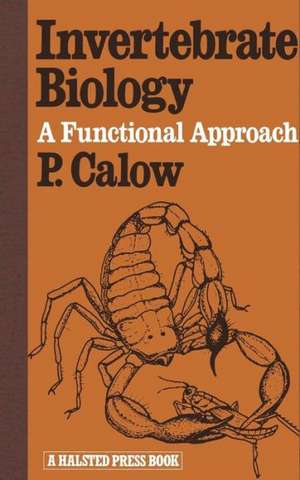Invertebrate Biology: A Functional Approach
Autor P. Calowen Limba Engleză Paperback – 2 mai 2012
| Toate formatele și edițiile | Preț | Express |
|---|---|---|
| Paperback (2) | 372.00 lei 6-8 săpt. | |
| Springer Us – 2 mai 2012 | 372.00 lei 6-8 săpt. | |
| Springer Us – 4 ian 1981 | 373.35 lei 6-8 săpt. |
Preț: 372.00 lei
Nou
Puncte Express: 558
Preț estimativ în valută:
71.19€ • 74.35$ • 59.03£
71.19€ • 74.35$ • 59.03£
Carte tipărită la comandă
Livrare economică 12-26 februarie
Preluare comenzi: 021 569.72.76
Specificații
ISBN-13: 9781475703337
ISBN-10: 1475703333
Pagini: 184
Ilustrații: 183 p. 53 illus.
Dimensiuni: 127 x 203 x 10 mm
Greutate: 0.19 kg
Ediția:Softcover reprint of the original 1st ed. 1981
Editura: Springer Us
Colecția Springer
Locul publicării:New York, NY, United States
ISBN-10: 1475703333
Pagini: 184
Ilustrații: 183 p. 53 illus.
Dimensiuni: 127 x 203 x 10 mm
Greutate: 0.19 kg
Ediția:Softcover reprint of the original 1st ed. 1981
Editura: Springer Us
Colecția Springer
Locul publicării:New York, NY, United States
Public țintă
ResearchCuprins
1. Introduction.- 1.1 Functional Biology — What is It ?.- 1.2 The Invertebrates.- 1.3 The Hiysiological Approach.- 1.4 Physiology and Fitness.- 1.5 The Last Word on Genetics.- 2. Acquisition.- 2.1 Why Feed?.- 2.2 What is Eaten and How?.- 2.3 Detailed Consideration of What Should Be Eaten.- 2.4 How Much to Eat.- 2.5 Gut Form and Function.- 2.6 Digestibility.- 2.7 Movement of Food Through the Gut.- 2.8 Control.- 3. Respiration.- 3.1 Molecular Basis.- 3.2 Oxygen Availability and Uptake.- 3.3 Levels of Metabolism.- 3.4 Routine Metabolism and the Effect of Body Size.- 3.5 Metabolism Associated with Feeding.- 3.6 Active Metabolism.- 3.7 Effect of Temperature.- 4. Excretion.- 4.1 What is It?.- 4.2 The ‘Excretory System’.- 4.3 Energy Costs and Benefits.- 4.4 Secretions.- 5. Growth.- 5.1 Introduction.- 5.2 Metabolic Basis.- 5.3 Distribution of limited and Unlimited Growth.- 5.4 Cellular Basis.- 5.5 Adaptational Aspects.- 5.6 On When to Stop Growing.- 5.7 Storage as a Special Kind of Growth.- 5.8 Allometric Growth.- 5.9 On Growth and Ageing.- 5.10 On Degrowth and Rejuvenation.- 6. Reproduction.- 6.1 Introduction.- 6.2 Sexual Gamete Production, Fertilisation and Early Development.- 63 Marine Life-cycles and the Trade-off Between Egg Size and Numbers.- 6.4 Eggs of Terrestrial and Freshwater Invertebrates.- 6.5 The Complex Insect Life-cycle.- 6.6 The Cost of Reproduction For Parental Survival (Iteroparity v. Semelparity).- 6.7 Reproduction Without Sex.- 7. Integration.- 7.1 Why the Holistic Approach is Important.- 7.2 The Energy Budget as an Integrating Equation.- 7.3 Scope for Growth in Mytilus.- 7.4 Integration Under Temperature Stress.- 7.5 Integration Under Food Stress.- 7.6 Modelling Metabolism.- References.- Glossary of Symbols.- Index of Organisms.









